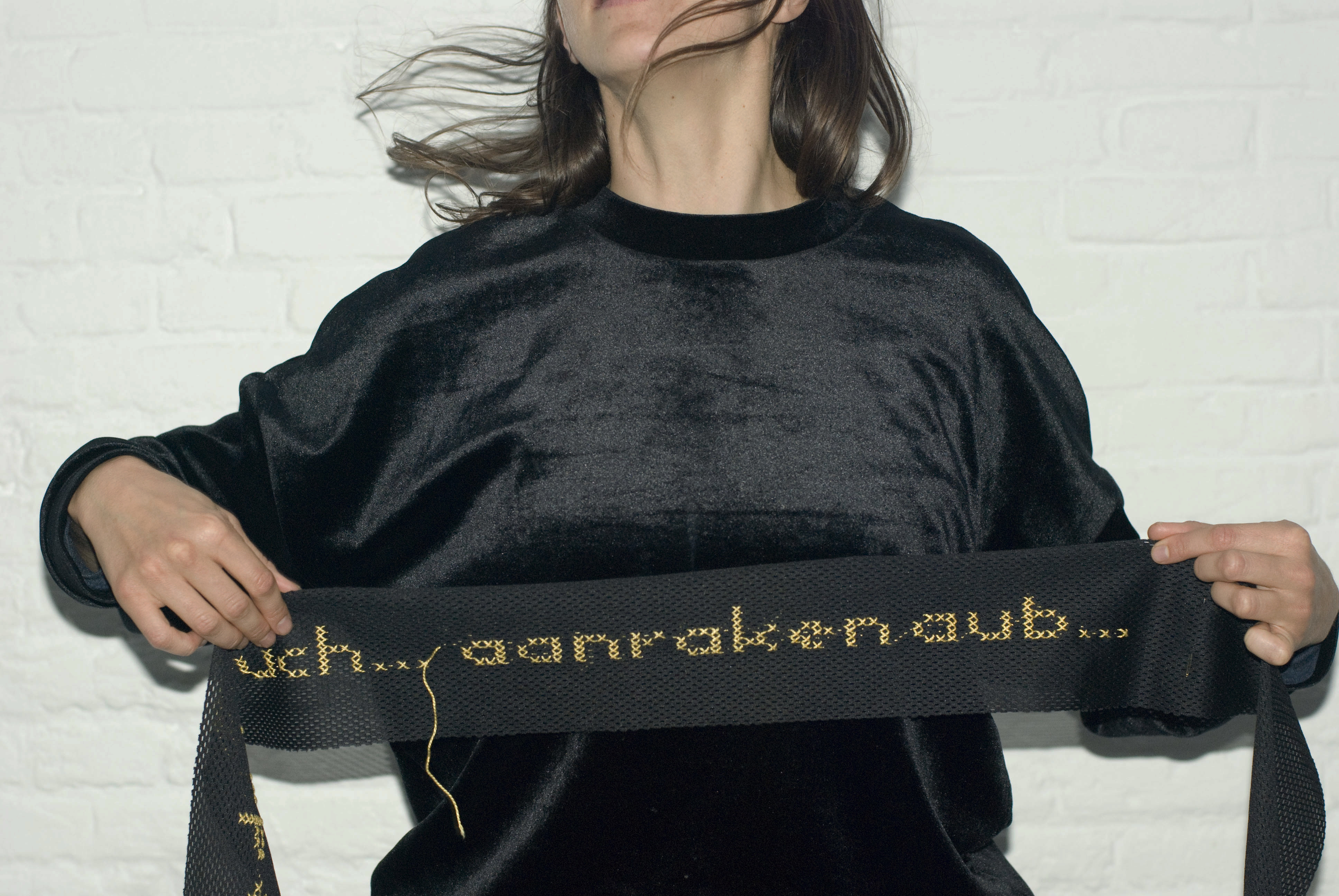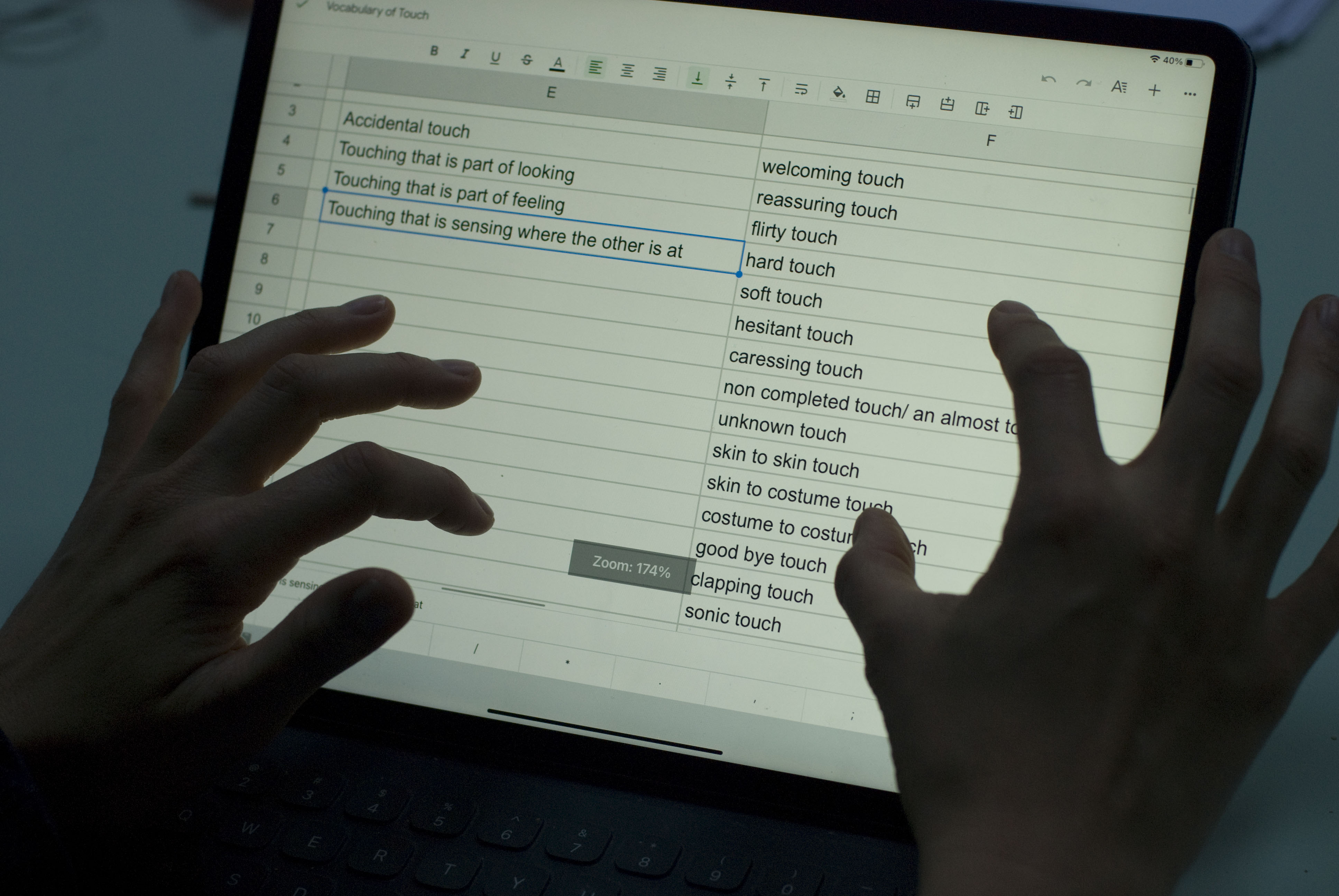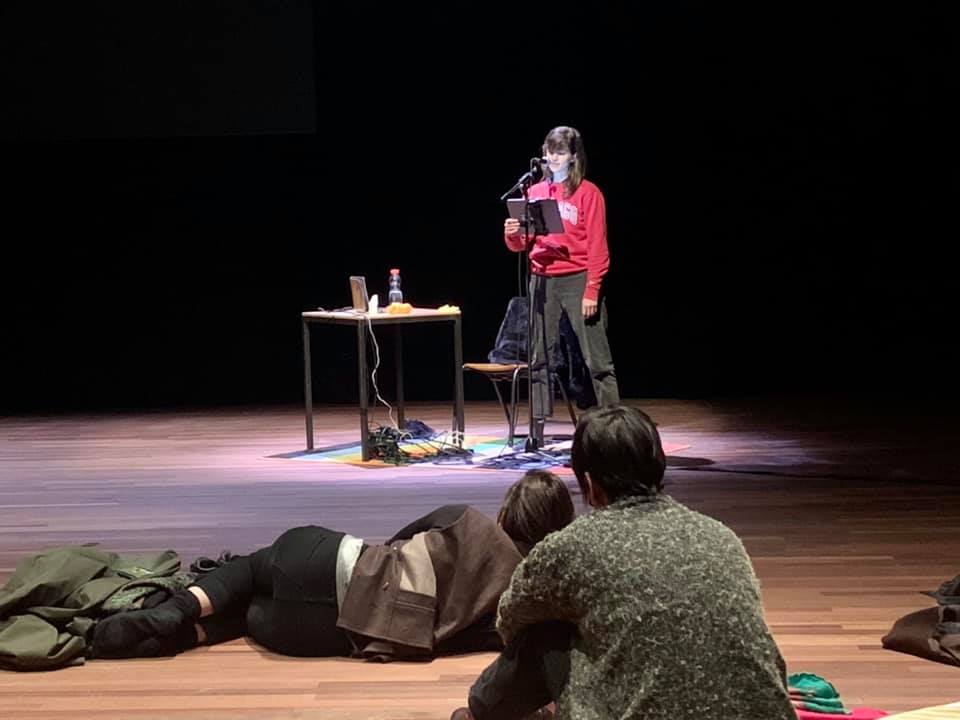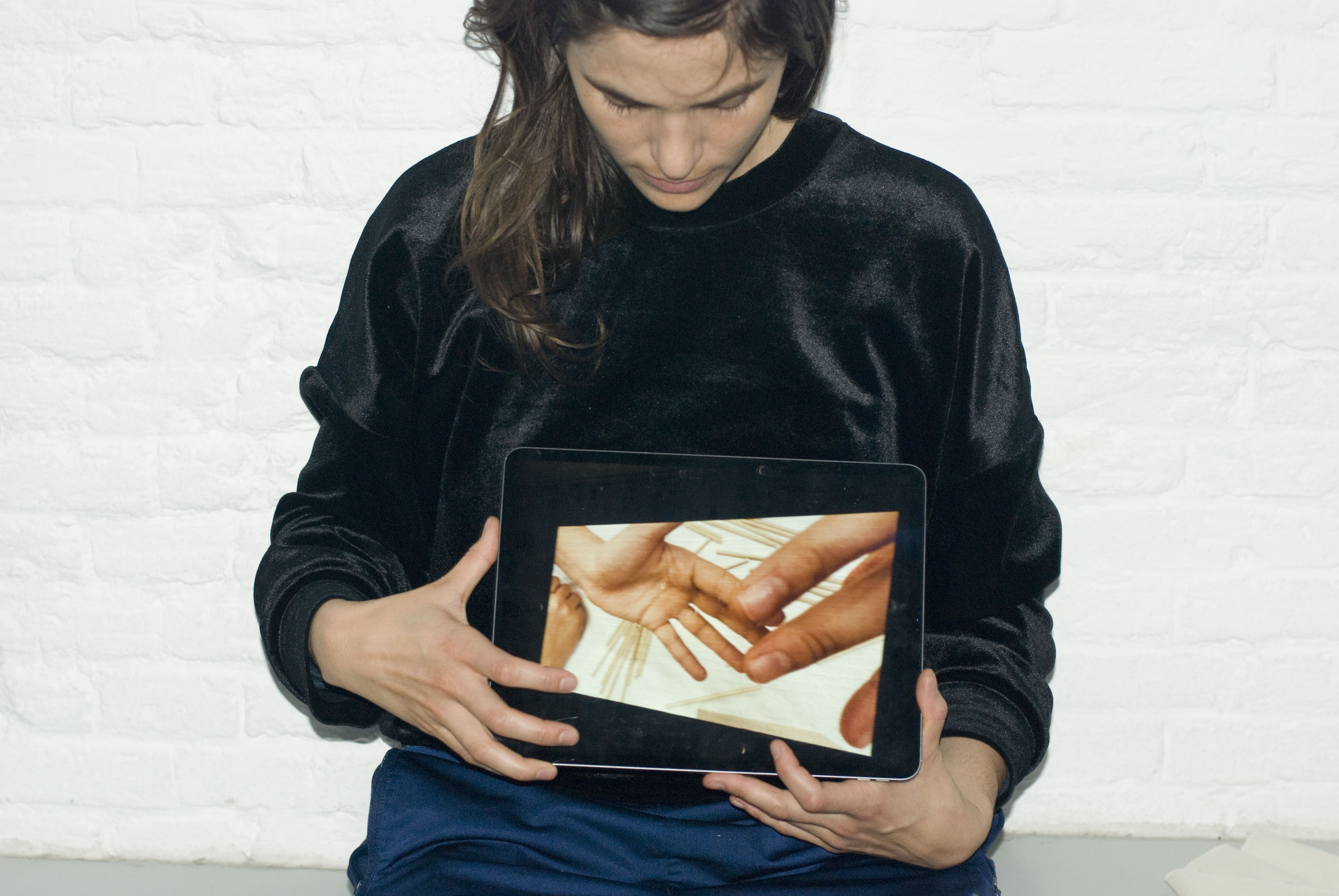Vera Tussing creative processes, performances and installations are driven by her interests in dance, movement, perception, the senses, embodied experience, multisensorial spectatorship, collectivity and consent.

During her residency here, Tussing went in search of a 'vocabulary of touch'. Can you hear touch? Is it necessary to see touch too? When is touch sexual or transgressive?
"I have been making performances and installations for ten years now, a good time to look back. At everything I have made, at the books I have read and at the interviews I have done with people from 'touch professions': from violinists to sex workers and therapists. I have come to the conclusion, that we don't have a language for our sense of touch. That is what I am going to work on in the coming years, and I started a dialogue with the makers present here about that. To conclude that journey, I will dance a choreography in which all experiences and stories about touch are recycled."

Public Sharing
In her final presentation at Vlaams Cultuurhuis de Brakke Grond, Vera showed a manifesto and an interactive reading of a number of research texts. Vera was supported by many of her remote colleagues, including Elvira Crois, Yoh Morishita, Ben McEwen, Michael Picknett, JS Rafaeli and Julia Rubies Subiro. Afterwards, a substantive follow-up discussion took place led by Charmy Rose.
'In a sea of postponed opportunities and cancellations I was very grateful to be able to receive the offer to work at BAU in Amsterdam for an entire month this year. This residency allowed me to reflect back on my past creations, but also re-enter and contextualise them from a more current stand point. Thank you BAU for providing the space, a community and opportunities for artistic practices and exchange to happen and grow.'
(Vera Tussing )

'In a sea of postponed opportunities and cancellations I was very grateful to be able to receive the offer to work at BAU in Amsterdam for an entire month this year. This residency allowed me to reflect back on my past creations, but also re-enter and contextualise them from a more current stand point. Thank you BAU for providing the space, a community and opportunities for artistic practices and exchange to happen and grow.'
(Vera Tussing )
Watch here a short video from our pilot residency BAU AIR² 2020. Choreographer/dancer Vera Tussing and choreographer/composer/performance artist Astrit Ismaili immersed themselves in their current, artistic research at BAU Studios. They also organized workshops, held an open studio and presented the interim outcome at the end of the residency during an informal presentation in Vlaams Cultuurhuis de Brakke Grond.
'Dance and performance makers in Amsterdam want to keep exploring their art and experiment with different disciplines. They also want to meet colleagues working elsewhere in the world. Platform BAU does something about it.'
Het Parool, 2 December 2020
Read article here

Vera Tussing graduated from London Contemporary Dance School, and has worked as a dancer, director and creator throughout the UK, Belgium, Canada and across Europe. In 2011 she premiered Trilogy with Albert Quesada, based on an initial commission from ROH2 at the Royal Opera House. This was followed by the stage pieces You Ain't Heard Nothing Yet (2012) and T-Dance (2014), as well as the movement- sound installation Sound Bed. The performance, The Palm of Your Hand premiered in 2015, followed by Mazing (2016). In 2017 a recreation of The Palm of Your Hand, making the work accessible to blind and partially sighted audience members, was undertaken as The Humane Body Project with ImPulsTanz (Vienna), Kaaitheater (Brussels) and The Place (London). This recreation premiered at CND, Paris. Both, Two, a duet in collaboration with Esse Vanderbruggen premièred at Kaaistudio's (Brussels) in 2018.
A central theme of Vera's work is how the different senses combine to structure our perception, and the creation of unique, inter-personal encounters between audience and performer.